The Crucial Moment of Deception
Abbott Handerson Thayer’s law of protective coloration
Hanna Rose Shell
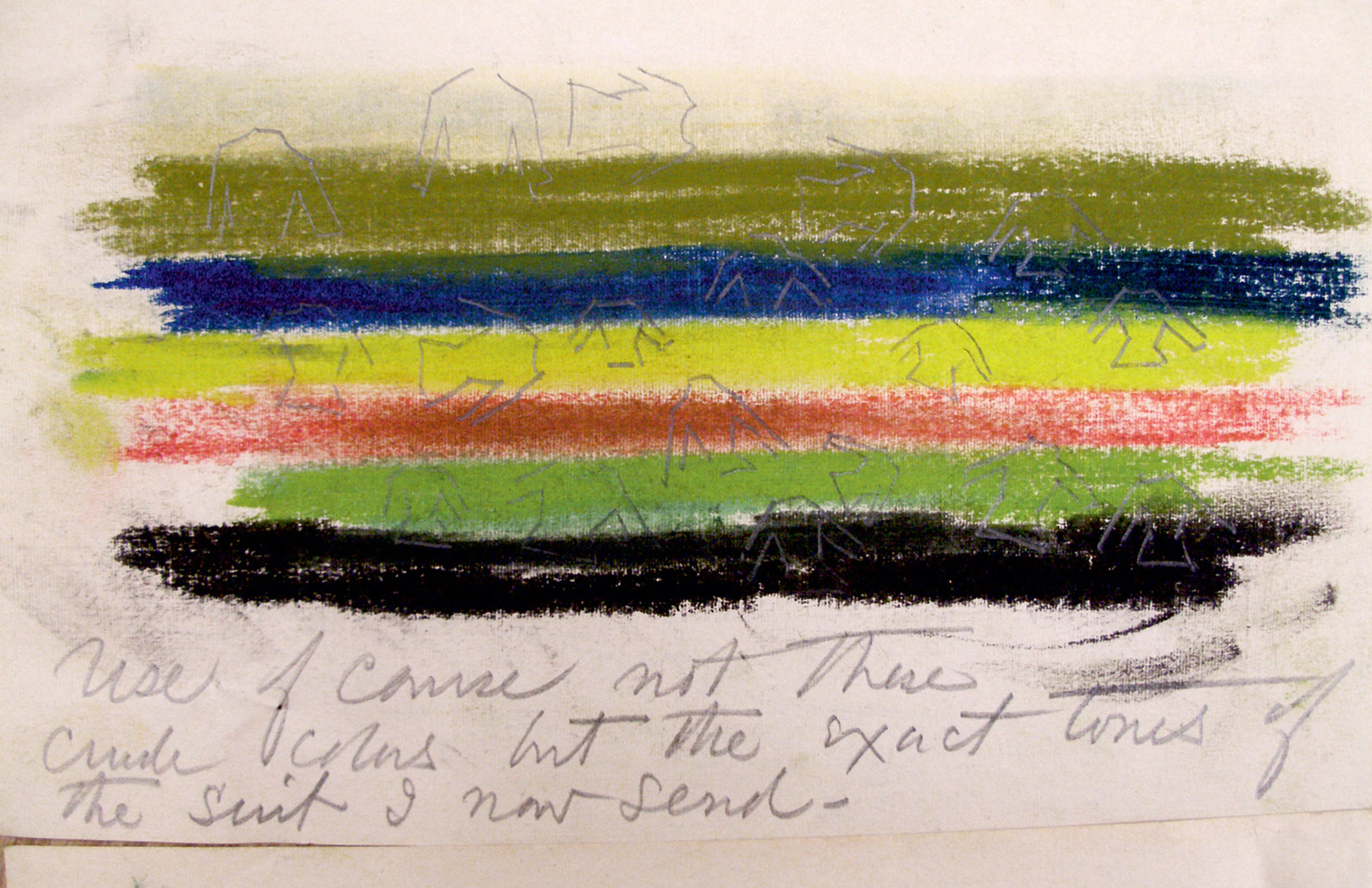
On 11 November 1896, an American painter known for his society portraits and demure landscapes made an unusual appearance at the Annual Meeting of the American Ornithologists’ Union in Cambridge, Massachusetts. Abbott Thayer arrived at the Harvard Museum of Comparative Zoology on Oxford Street bearing a sack of sweet potatoes, oil paints, paintbrushes, a roll of wire, and two new principles of invisibility in nature that together formed his “Law Which Underlies Protective Coloration.”[1] In his afternoon open-air lecture, Thayer argued that every non-human animal is cloaked in an outfit that has evolved to obliterate visual signs of that animal’s presence in its typical habitat at the “crucial moment” of its utmost vulnerability. According to him, all animal coloration was a function of this need to hide in the environment.
Thayer identified two visual phenomena undergirding this invisibility: “obliterative countershading” and “disruptive patterning.” In the first, animal skins achieve an illusion of monochrome flatness via coloration darkest in sunlit parts and lightest in areas generally bathed in shadows: examples include the light bellies of otherwise dark rabbit coats or the silver undersides of sharks. The resulting visual compression of a three-dimensional form produces an illusion of monochrome flatness. The second principle takes this illusion to the next level of protective concealment: mottled patterns corresponding to the animal’s habitat disrupt the contours of its flat silhouette, resulting in an impression of not being there.[2] An example is the coloration of bullfrogs. Natural selection, continued Thayer, favors individuals visually expressing one or both of these traits and constructs a world of momentarily evanescent animal objects.
This protective coloration was, claimed Thayer, related to a notion of concealment specific to a particular instant snapped out of a continuum of time. As he would later write, “At these crucial moments in the lives of animals when they are on the verge of catching or being caught, sight is the indispensable sense. It is for these moments that their coloration is best adapted, and when looked at from the viewpoint of the enemy or prey as the case may be, proves to be obliterative.”[3]
For the assembled audience of scientists, bird enthusiasts and interested passersby, Thayer introduced his law as a scientific discovery of great importance, uncovered through the workings of an artistic mind. He then used his props to present a disappearing act with painted and posed sweet potatoes, making ones that had been painted lighter on the undersides—“countershaded”—disappear from view.[4] Unpainted monochrome specimens, meanwhile, stood out like sore thumbs against the dirt. “The effect was almost magical,” recounted one audience member.[5]
This game of hide-and-seek was no joke. By 1896, Thayer was increasingly inserting himself into what was a longstanding debate over the origins, effectiveness, and pervasiveness of protective concealment in the natural world. After the publication of Charles Darwin’s Origin of Species in 1859, animal coloration—both its origins and its role in animal behavior—had become a key locus of debate among natural historians, artists, and the lay public. Prior to this period, naturalists had noted instances of animals’ blending in with their backgrounds. It seemed remarkable that God had “dropped” them into place just so—“nature by design.”[6] By contrast, in an evolutionary model, there was a gradual “fitting together” over time. Evolutionary theories, both Darwin’s and that of his colleague Alfred Russel Wallace, presented a range of explanations for animal colors. Darwin emphasized interrelations between the sexes as the cause of the showy coloration found in the male of many species; females chose the more colorful males for mating. Wallace, meanwhile, thought color was better understood as the result of strictly environmental pressures. Studying the colors of many insects, he interpreted bright hues and complex patterns alike as either warning signals to potential predators, modes for assimilation in the environment, or mimicry of other, more dangerous, species.
Thayer’s interest in nature’s visual illusions originated in his hobbies as a birdwatcher, hunter, and amateur photographer, as well as in his classical training as a painter. He kept a journal of bird sightings from the woods surrounding his summer home in Dublin, New Hampshire, and collected dead birds to skin for visual analysis and three-dimensional modeling, becoming “an excellent taxidermist through his inborn sense of form and gesture.”[7] In the 1880s, he became a reader of Darwin and Wallace, as well as of later biologists inspired by them to focus on the evolution of color. Within a culture generally fascinated by deceptive visual fields, bird study became a vital link between the concerns of natural science and those of representational art making. Philosopher-psychologist William James, a friend of Thayer’s and a fellow birder, discussed the experience of bird watching in his 1890 Principles of Psychology, describing the study of illusions, or so-called “false perceptions,” as critical to efforts to understand sensations related to depth, color, and movement perception. In the section on illusions, James brings to his readers’ attention the following anecdote recounted by a colleague:
A sportsman, while shooting woodcock in cover, sees a bird with the size and color of a woodcock … but through the foliage, not having time to see more than that it is a bird of such a size and color, he immediately supplies by inference the other qualities of a woodcock, and is afterwards disgusted to find that he has shot a thrush.[8]
James extended examples drawn from hunting to the world of men at war with enemies within and without: “as with game, so with enemies, ghosts, and the like.”[9]
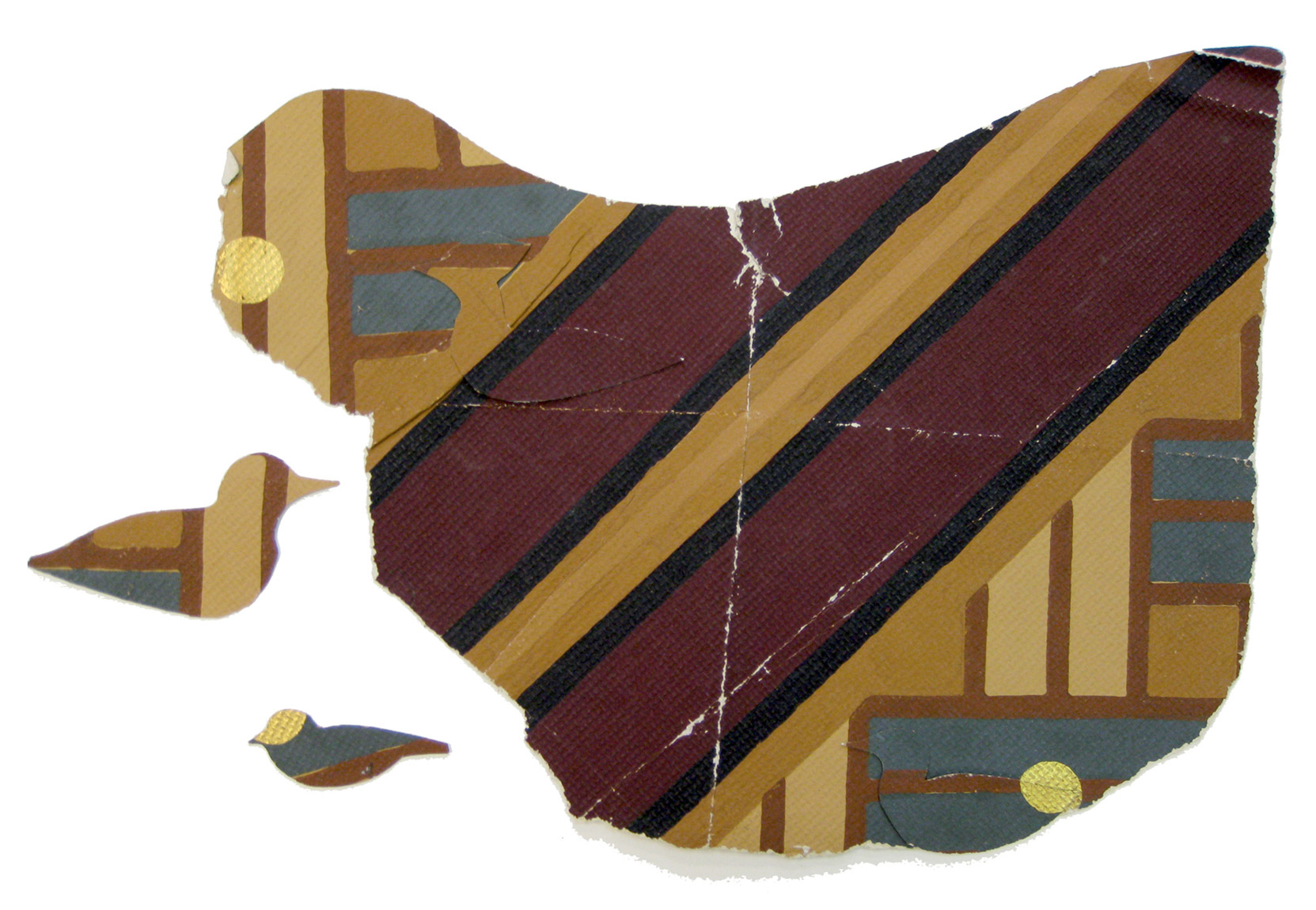
The interest that visual disappearance and identification held for natural historians, psychologists, artists, and militarists was transformed in the 1870s wih the advent of instantaneous, quick-exposure photography. New portable cameras had come to market, and ornithologists quickly perceived how the devices could stop live animals in their tracks. If bird watching was to some extent a game of hide-and-seek, the photographic apparatus became an exciting new player.
The new technology was as crucial as taxidermy for Thayer’s study of birds: photography for its indexical relationship to its referent, and taxidermy for its ability to document and freeze time. By 1894, Thayer’s taxidermy workshop and backyard had become his laboratory, with his camera serving as technologist. Taxidermy and photography became media interwoven for the purposes of discovery, proof, and performance of the “crucial moment” of invisibility achieved through strategic coloration.
In his art projects, Thayer sought to replicate the experience of looking at this defining moment in the life of an animal—and, furthermore, learning how to become an invisible animal. The canvas served as Thayer’s laboratory for representing this perceptual experience, and evolution by natural selection was perfected through the collages he made in his studio. Even if animals didn’t always appear to disappear in the real world, they could do so very well in his assembled version of that world.
Thayer’s New Hampshire summer home, to which he and his family relocated around 1900, was transformed into a year-round laboratory for studying protective coloration. Soon, his wife Emma, son Gerald, and daughters Mary and Gladys joined him as fellow investigators, technicians, and artisans. Between 1901 and 1909, their generative theories were built up into a universe of paintings, photographs, collages, stencils, and essays. Each format addressed the enigmas of coloration and invisibility in different ways. In some collages, Thayer mounted actual bird skins and feathers on panels, thus calling attention to the animal as pure surface; for others, he created photographic collage “quilts” that combined small fragments of larger photos, developing his idea of nature as a two-dimensional “media environment” where a living body could be made to stand out or disappear as easily as an inanimate pattern. Thayer was simultaneously producing, witnessing, and documenting the processes of a living being’s assimilation into its habitat.
In the early 1890s, Thayer had begun to think about silhouetted animal forms through the production, installation, and distribution of stencils—literally, cut-outs of bird, snake, or human forms. These were perceptual tools for “painting out” real objects, for making them both appear and disappear. Stencil constructions became site-specific installations. For example, he cut the silhouette of a woodland duck out of rigid canvas, and took wood planks and a tool kit into the field, where he nailed the fabric, now with a void in the middle of it, onto wooden beams attached at crossed angles. He then wedged this structure into the earth at the edge of a streambed. The hole, in the form of the duck’s silhouette, provided a window into the world behind the canvas; the photograph of this scene documents how a viewer would perceive a woodland duck if it were in precisely that position, and perfectly invisible.
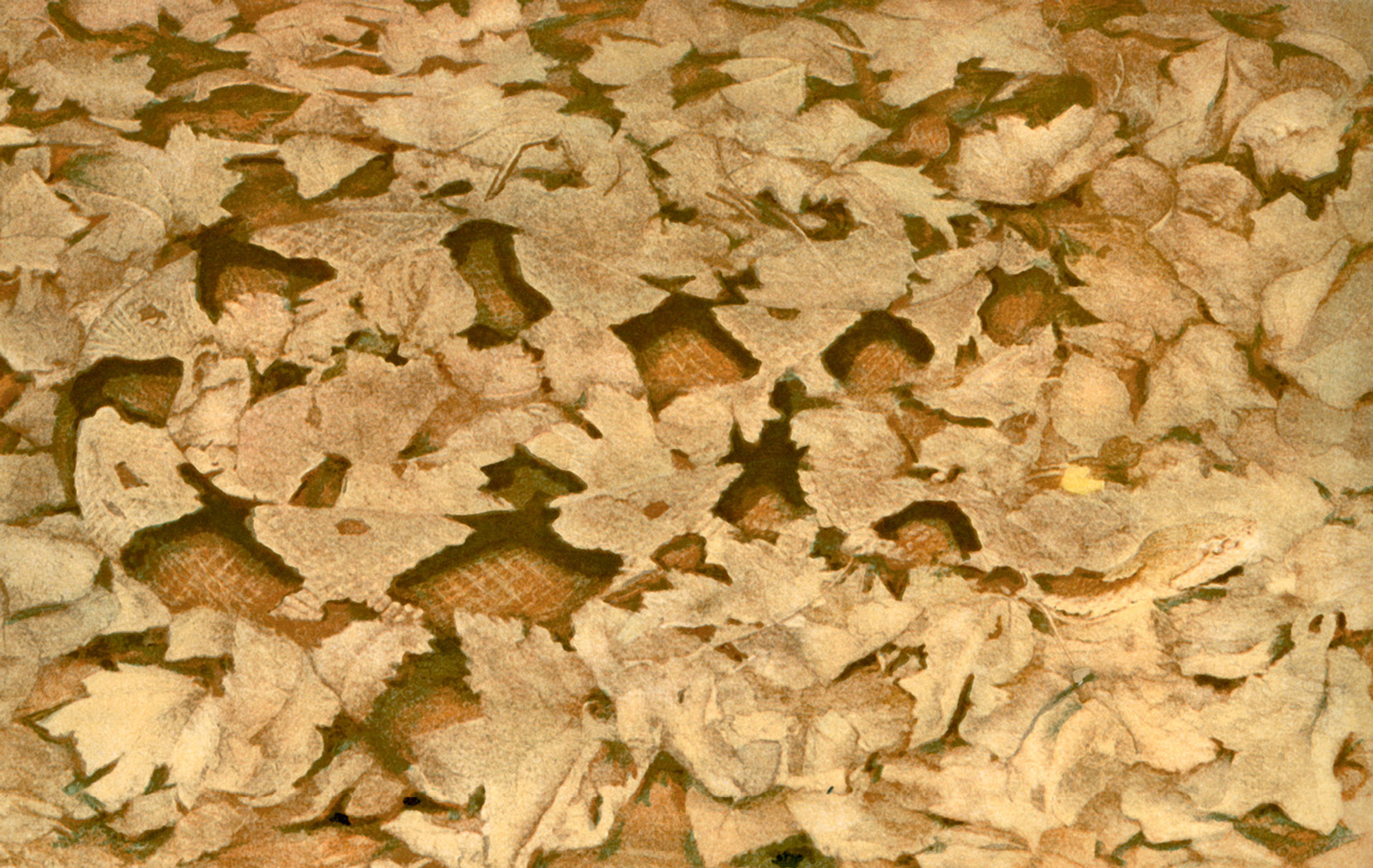
Thayer also encouraged others to develop their perceptual skepticism through the use of homemade stencil sets that could be cut out of a range of materials, including wallpaper and shoe leather. He sent stencil kits, complete with instructions for use, to Wallace, to color biologist Edward Poulton, and to painter John Singer Sargent. For one kit, Thayer cut a duck silhouette out of floral wallpaper, pasted the remaining wallpaper to a sheet of watercolor paper, and then attached the duck cutout to a string. As Thayer advised Wallace:
All brilliant birds are precisely related to their habitat, as the enclosed wallpaper bird is to the wallpaper he fits in and … there is no such thing, save in a cabinet, as a conspicuous bird. This wallpaper bird, or any so-called conspicuous bird is, even without regard to his background, less conspicuous than if he were monochrome, being cut into separate entities, and when he gets into the place you cut him out of, he is gone![10]
The duck cutout is a vision, and a material instantiation, of what a duck would look like if it happened to be a perfect wallflower. The stencil served as a visual tool and a field kit in one; here, the user was not simply a consumer of illusionistic models, but through the process of consumption produced his or her own revelation of concealment.
Thayer also made models that likewise gave viewers the opportunity to actively manipulate animals in their surroundings. In one of these, a countershaded model duck hung suspended in a four-sided glass case lit from above, as in nature at midday. The model rotated as the participant turned a hand-crank, making the duck appear and disappear. Thayer designed many such “disappearing exhibits” for museums, universities, and private homes in both Europe and the United States; one installed at London’s Museum of Natural History remained there until at least 1925. Part of the history of both illusionism and dioramas, these exhibits were considered innovative tools of museum pedagogy, and were among the first “hands-on” science exhibits to be used in natural history museums.
Many of Thayer’s projects were collected in the massive and profusely illustrated 1909 publication Concealing-Coloration in the Animal Kingdom, a collaboration with his son Gerald. The book solidified the relationship between pattern, hole, and silhouette that the elder Thayer had been developing since the 1890s. The layout of the book itself expressed a unique approach to object-based learning as visual training; its centerfold was a snake-shaped stencil overlaid on a painting of a copperhead concealed in the foliage. A broad spectrum of scientific, artistic, and popular journals reviewed Concealing-Coloration. Nature, Science, the Nation, and the New York Times all gave the book positive reviews, praising it for its innovative approach, popular appeal, and more-or-less scientific basis.[11] Edward Titchener, protégé of Wilhelm Wundt, founder of the first experimental psychology lab in the US, promoted Concealing-Coloration in the American Journal of Psychology as an important contribution to the field, and described Thayer’s illustrations as valuable optical training devices.[12]
The book sold well, yet had its skeptics. Some biologists, including those initially supportive of Thayer’s work in the 1890s, were quick to point out that many animals use their coloration to become more visible, as when trying to attract the attention of a potential mate or to ward away potential predators. Thayer flatly denied the relevance of both explanatory frameworks. One of the most vocal critics was none other than ardent hunter Theodore Roosevelt.[13] In his book African Game Trails, an extended account of his post-presidential safari expedition between 1908 and 1910, Roosevelt devoted an entire appendix to his criticism of Thayer’s work, lambasting his attempt to apply universally the law of protective coloration to all non-human animals.[14]The Dial also criticized Thayer’s universalizing approach, though assenting that in this, “its very faults may prove stimulating.”[15]
Others noted that Thayer’s model of concealment implies a static environment; organism and habitat are fixed in place by necessity. If the warbler shifts position, or the branches lose their leaves, the illusion of “not being there” would be shattered. As Thayer had stated:
The theory of natural selection is based on the belief that organisms are susceptible of modification limited only by the duration of the circumstances causing it, or by the attainment of ultimate perfect fitness to the environment.[16]
And in Thayer’s account, the “perfect fitness” aimed at by protective coloration resulted in picture-perfect, even stencil-like, concealment of each individual of an animal species. This concealment, however, was not for all time. In fact, concealment didn’t even last all season or all day. Rather, it pertained only to a single, and therefore privileged, “crucial moment.”[17] According to Thayer, nature’s stitches in time were not all equal; some moments in an animal’s life, especially those at which it encountered its most vicious predator, mattered more than others. The dappled clothing of the peacock, the hot pink of the flamingo, and the yellow splotches of the warbler were each, according to Thayer, associated with a specific moment in time and position in space. In the case of the flamingo, for example, the “crucial moment” occurred when an alligator sought out its prey, looking out toward the hot pink of a Florida sunset.
But what about the moment before concealment? And what about the moment after, when the animal moves out of the photographic instant for which its concealment had seemingly been constructed? As Roosevelt wrote: “The idea set forth in the picture is shown to be foolish by a moment’s consideration of the fact that neither the oryx nor any other antelope stands motionless at a watering hole. The very fact of coming down to drink implies motion, and motion in such a case instantly takes away all concealing power from any coloration.”[18] Roosevelt took issue not only with Thayer’s fetishization of the photographic instant as a unit of analysis and visual interaction, but also with his lack of hands-on experience of his subjects: “Remember that he has never studied flamingoes in their haunts, he knows nothing personally of their habits or their enemies or their ways of avoiding their enemies.”[19]
Thayer responded in kind with a series of articles published in the Bulletin of the American Museum of Natural History and letters to the editors of the New York Tribune and the New York Sun. A paragraph from his article for Popular Science Monthly sums it up:
No amount of reiterating that you have seen the poacher not poaching or the bank-note counterfeiter not counterfeiting, or this newly discovered animals’ costume-scenery-counterfeiter not counterfeiting is any step at all toward finding out whether all three do at certain times perform their tricks.[20]
And yet, even as he fought his critics, Thayer himself had a sense that there was something else at stake in his work than creating a mimetic facsimile of nature in action, or an argument about the direction of evolution in nature. In those cases where he seemed to be reaching beyond the bounds of accepted understanding of perception in nature, he was laying the groundwork for the application of his ideas to engineering practices in the human sphere. For example, in 1912 he drew on his theory of countershading to explain the invisibility of the iceberg that caused the Titanic disaster, suggesting a way to create spectacles to reverse the effects of obliterative countershading and thereby enable the detection of dangerous obstacles at sea.[21]
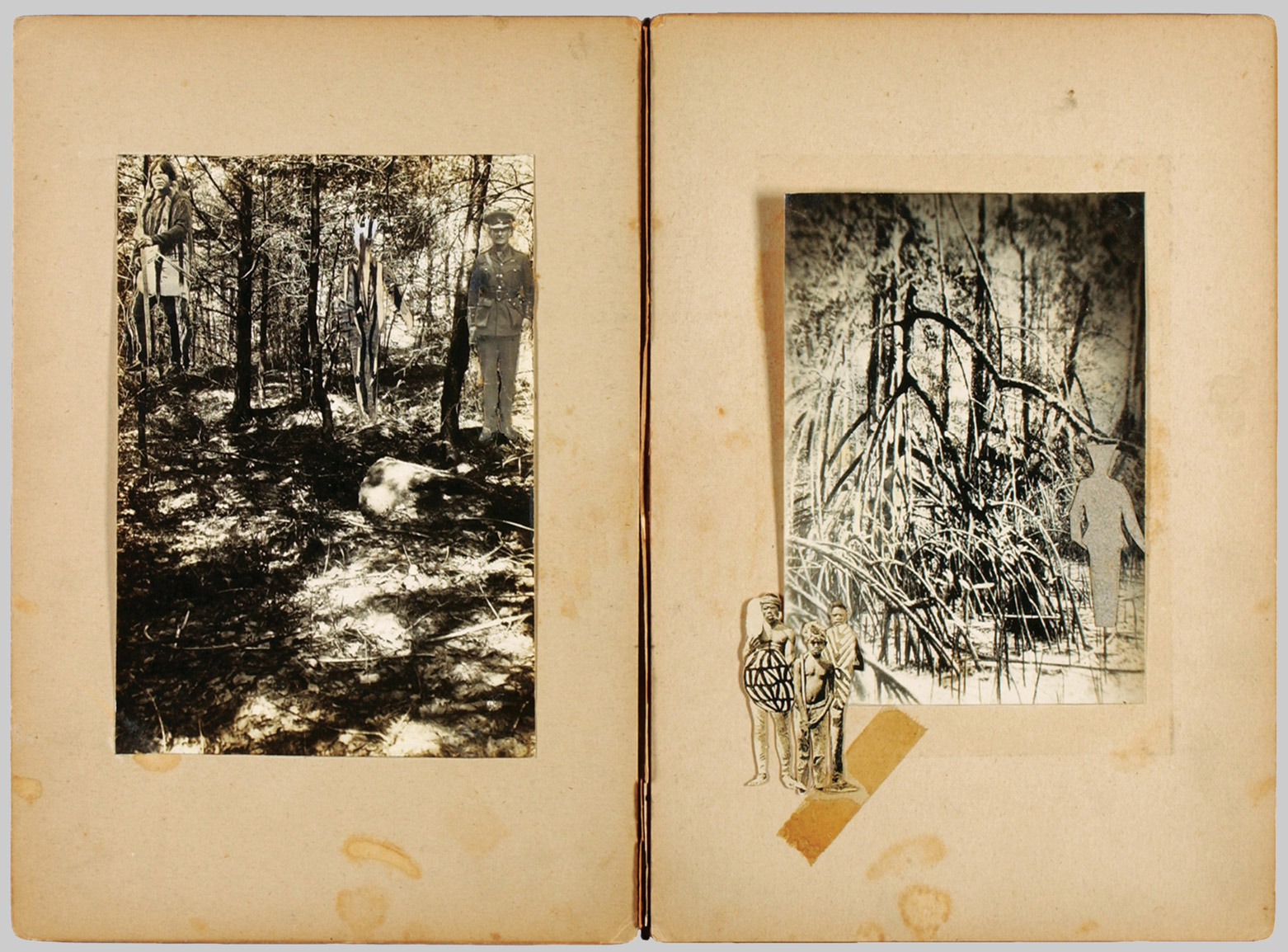
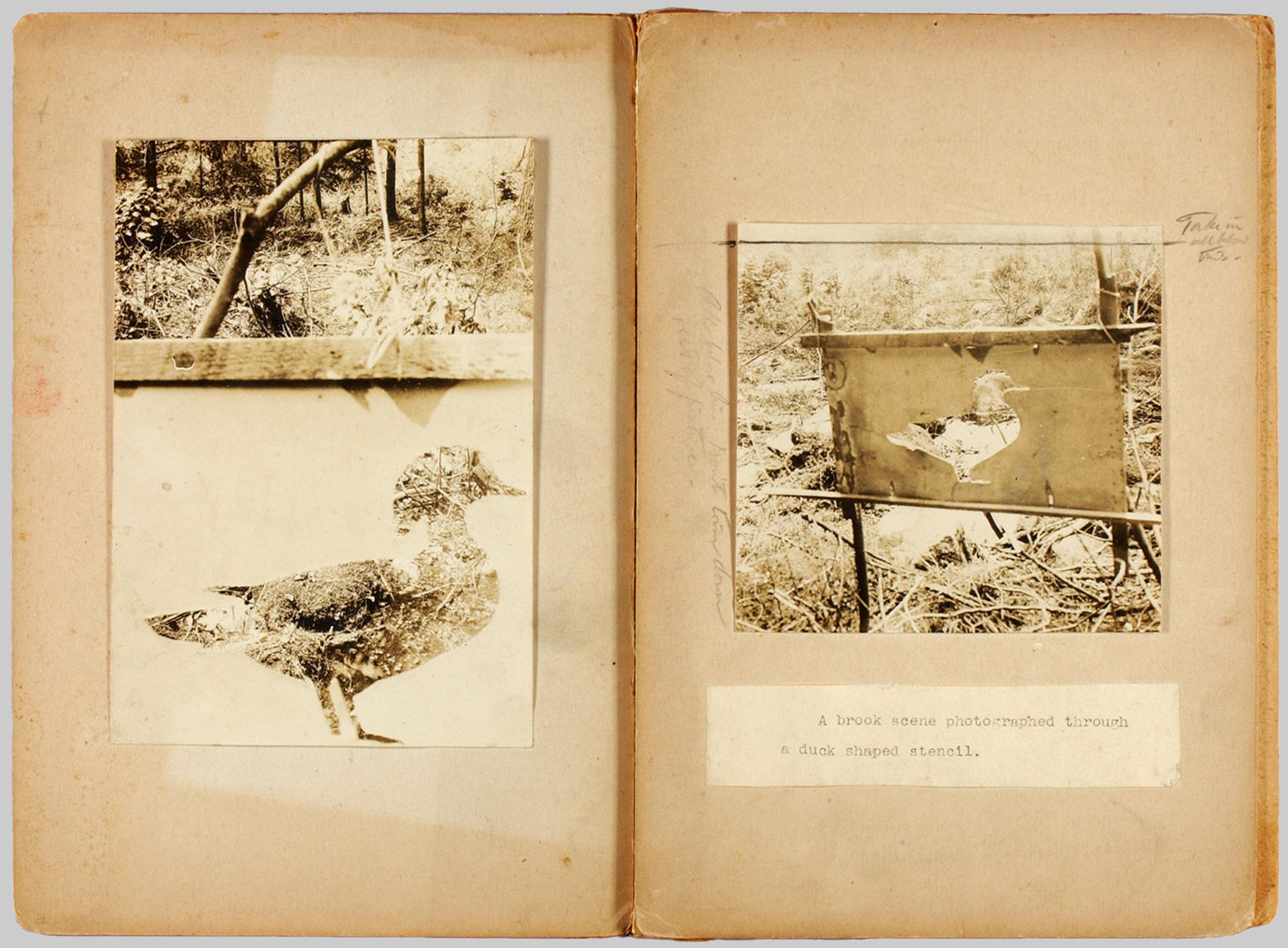
Around the same time, systematic, quasi-scientific application of visual concealment principles to human and non-human objects began to emerge within the theater of war: it was given the name camouflage. Thayer had argued that ultimately every animal worth its pelt intended to disappear at a crucial moment, and what moment was more crucial than that of extreme vulnerability in battle? After war broke out in 1914, he suggested that disruptive patterns and countershading might be applied to battleships and merchant vessels to great effect.[22] He soon turned to productive concealment of the human self. By 1912, Thayer had already begun investigating how—as he understood it—humans had historically created their own modes of “protective coloration” through technologies of adornment, the effect being similar to those principles he had discovered in nature. His armchair anthropology consisted of the study of photographs of indigenous people and the comparison of their appearance to human-shaped stencils cut out of the photographs’ backgrounds. Tattooing and decoration practices, he posited, might be best understood—from an evolutionary point of view—as technologies of protection and invisibility. Western people, Thayer noted, avoided such concealing costumes in favor of traditional monochrome dress, as in the case of the soldier in gray shown in one of his illustrations. This was a mistake, he asserted. The twentieth-century soldier, like the primitive warrior, should find a way to hide through an alteration in dress. Thayer pursued these themes in “Tree Man” and “Stone Man,” photocollages in which he dressed people in the photographic skins of the environment within which they are hidden.
In 1915, Thayer sent versions of these photocollages, along with instructions for viewing them, to John Singer Sargent. Best known for his society portraits and paintings of military figures, Sargent had just been appointed as an official war artist by the British government. A year earlier, Thayer had in fact contacted the British War Office directly to discuss the mass production of camouflage jackets and pants, but his approach had not met with any response. Thayer hoped that Sargent’s new position would help him arrange a meeting this time around. His note to Sargent read:
I am enclosing a simple but wonderful device for absolutely ascertaining exactly what any object would have to look like to be wholly invisible against any particular background. You will see at a glance that in this particular picture nothing could so entirely efface the soldier I have cut out as for him to wear the pattern which constitutes his portion of this very picture.[23]
Thayer’s enclosed sketch for a sniper suit showed a pattern of bright yellow, red, and green splotches onto which he had traced silhouettes of trousers and overcoats. Thayer’s model for such a jacket, which he went on to propose as a new uniform for the British infantry, was a secondhand hunting coat—gifted posthumously by William James in 1910—that he had turned into a prototype sniper suit. Thayer, long known for his odd clothing and assortment of modified jackets, wore James’s hand-me-down constantly; it became his sartorial second skin, practical for painting in the studio and trekking through the outdoors alike. The coat quickly grew threadbare, acquiring a patina, and James’s son later recalled with pleasure witnessing “this familiar garment on the back of my dear old ‘Uncle’ Abbott” and watching it “grow shabbier and more and more covered with paint as time went on.” Thayer attached pieces of variably dyed and painted rags and fabric swatches to the old overcoat, breaking up the outline of his own silhouette and making him an undetectable presence in the bushes behind his own New Hampshire home. He wore it in his workshop as he composed responses to the criticisms he received for Concealing-Coloration and wrote letters to members of the American government and British Army.
At last, with the help of Sargent, he arranged a trip to London to meet with Winston Churchill, then the British Secretary of War, to show the politician his work. But once in London, Thayer grew inexplicably nervous and contacted Sargent to say that he could not go through with the meeting. Sargent agreed to deliver the suitcase that Thayer had brought with him for the presentation, and which, in addition to examples of painted fabric, collages, wallpaper swatches, and stencil sets, also contained several letters with suggestions on camouflage design. The reaction was not what Thayer had anticipated. From his perspective, the suitcase held a Great Work; all the War Office could see was a pile of rags. Sargent recalled that the suitcase “contained some drawings and an old spotted brown jacket with rags pinned to it”—James’s overcoat as defaced by Thayer. Years later, the philosopher’s son reflected to Thayer’s biographer that “this was evidently the last appearance of my father’s brown coat.”[24]
Like the coat, many of Thayer’s experimental assemblages and artworks of effacement have vanished from the material record, leaving behind only textual traces. The duck models, feather paintings, and rag-doll decoys were scattered far and wide, and eventually lost. Thayer’s premise of universal protective concealment in nature, with its disregard of sexual selection and its curiously over-inductive method, became a pedagogical method for camouflage training and implementation during the two world wars, although he never received the official affirmation he craved.
The painter Barry Faulkner, a student, former taxidermy assistant, and old family friend, wrote from New York in 1917:
Uncle Abbott’s theories have been used to an amazing extent by the English and French in concealing guns, buildings and every conceivable thing. I’ve got hold of some of the material and sent it to high personages in Washington. … In case of war this concealing work has real importance and artists are the best people to do it.[25]
American, British, and French military officials, alas, did not agree, favoring the schemes proposed by those from an engineering background. Nonetheless, Faulkner and another Thayer student, Homer Saint-Gaudens, both ended up fighting with the camouflage units of the American Expeditionary Force, whose methods were inspired by some of Thayer’s principles for concealment of trenches, supply depots, and infantry at rest.[26]
In his waning years, Thayer, while continuing to write and paint between increasingly frequent spells of nervous exhaustion, submitted several other unsuccessful proposals to the British and American governments, also contacting Franklin Delano Roosevelt and other members of the US Naval Board directly.[27] Thayer died on May 29th 1921, shortly after he delivered a lecture in Cleveland on camouflage dioramas he had designed with his son—his last noted disappearance.
- “Fourteenth Congress of the American Ornithologists’ Union,” The Auk, no. 14 (January 1897), pp. 82–86.
- Abbott H. Thayer, “The Law Which Underlies Protective Coloration,” The Auk, no. 13 (April 1896), pp. 124–129.
- Abbott H. Thayer, “An Essay on the Psychological and Other Basic Principles of the Subject,” in Gerald H. Thayer and Abbott H. Thayer, Concealing-Coloration in the Animal Kingdom—An Exposition of the Laws of Disguise Through Color and Pattern: Being a Summary of Abbott H. Thayer’s Discoveries (New York: MacMillan, 1909), p. 4.
- Frank Chapman, Autobiography of a Bird Lover (New York: D. Appleton-Century Company, 1933), pp. 78–79.
- Reported by A.O.U. secretary J. H. Sage in “American Ornithologists’ Union,” Science New Series, vol. 4, no. 102 (11 December 1896), pp. 868–870.
- Muriel Blaisdell, “Natural Theology and Nature’s Disguises,” Journal of the History of Biology, vol. 15, no. 2 (1982), pp. 163–189.
- Barry Faulkner, Sketches from an Artist’s Life (Dublin, New Hampshire: William Bauhan, 1973), p. 19.
- William James, Principles of Psychology [1890] (New York: Dover Publications, 1950), pp. 95–96. James is quoting George John Romanes, Mental Evolution in Animals: With a Posthumous Essay on Instinct by Charles Darwin (New York: D. Appleton and Company, 1884), p. 324.
- William James, Principles of Psychology, op. cit., p. 96.
- Abbott H. Thayer to Alfred Russel Wallace, 22 July 1905 (Alfred Russel Wallace Archive at the Oxford Museum of Natural History).
- Louis Agassiz Fuertes, “Concealing-Coloration in the Animal Kingdom,” in Science: New Series, vol. 32, no. 823 (7 October 1910), pp. 466–469. See Book Review Digest: Sixth Annual Cumulation of Book Reviews of 1910 in One Alphabet (Minneapolis: H. W. Wilson Company, 1910), p. 392.
- E. B. Titchener, “An Arraignment of the Theories of Mimicry and Warning Colors: Concealing-Coloration in the Animal Kingdom: An Exposition of the Laws of Disguise through Color and Pattern, Being a Summary of Abbott H. Thayer’s Discoveries,” in The American Journal of Psychology, vol. 21, no. 3 (July 1910), pp. 500–504.
- For a nuanced analysis of the debate between Thayer and Roosevelt, see Alexander Nemerov, “Vanishing Americans: Abbott Thayer, Theodore Roosevelt and the Attraction of Camouflage,” in American Art, vol. 11, no. 2 (Summer 1997), pp. 50–81.
- See Sharon Kingsland, “Abbott Thayer and the Protective Coloration Debate,” in Journal of the History of Biology, vol. 11 (1978), pp. 223–244.
- T. D. A. Cockerell, “Nature’s Game of Hide-and-Seek: A Review of Concealing-Coloration in the Animal Kingdom,” The Dial (July 16 1910), p. 33.
- Thayer & Thayer, Concealing-Coloration, op. cit., p. 5.
- Ibid., p. 4.
- Theodore Roosevelt, “Revealing and Concealing Coloration in Birds and Mammals,” Bulletin of the American Museum of Natural History, vol. 30, article 8, p. 226.
- Ibid., p. 228.
- Abbott H. Thayer, “An Arraignment of the Theories of Mimicry and Warning Colors,” Popular Science Monthly, vol. 79 (1911), p. 26.
- Barry Faulkner, Sketches from an Artist’s Life (Dublin, New Hampshire: William Bauhan, 1973), p. 21.
- Abbott H. Thayer, “Patterns and White,” a letter to The New York Sun, ca. 1915. Thayer also wrote to Franklin D. Roosevelt in 1914, 1917, and 1917 advising that boats should be painted white, not gray (Abbott Handerson Thayer and Thayer Family Papers, Archives of American Art).
- Abbott H. Thayer to John Singer Sargent, ca. 1915 (Abbott Handerson Thayer and Thayer Family Papers, Archives of American Art).
- Nelson White, Abbott H. Thayer: Painter and Naturalist (Hartford: Connecticut Printers, 1951), p. 51.
- Barry Faulkner to his friend “W. B.”, ca. 1917 (Barry Faulkner Papers, Archives of American Art).
- Roy R. Behrens, False Colors: Art, Design and Modern Camouflage (Iowa City: Bobolink Books, 2002), p. 63. See also Behrens, “The Theories of Abbott H. Thayer: Father of Camouflage,” in Leonardo, vol. 21, no. 3 (1988), pp. 291–296.
- Director of Equipment Stores to John Singer Sargent, 10 January 1916, London; J. Stevens, British War Office, to Abbott H. Thayer, 14 August 1916, London (Abbott Handerson Thayer and Thayer Family Papers, Archives of American Art)
Hanna Rose Shell, assistant professor in the Program in Science, Technology & Society at the Massachusetts Institute of Technology, is a Boston-based historian of science, media artist, and filmmaker. Her book Hide and Seek: Camouflage, Photography and the Media of Reconnaissance is forthcoming from Zone Books (2010). Her recent shows include collaborations with Machine Project in Los Angeles (2008 and 2009) and screenings at New York’s Museum of Modern Art. For more information, see www.mit.edu/~hrshell or www.secondhandfilm.com [link defunct—Eds.].
Spotted an error? Email us at corrections at cabinetmagazine dot org.
If you’ve enjoyed the free articles that we offer on our site, please consider subscribing to our nonprofit magazine. You get twelve online issues and unlimited access to all our archives.